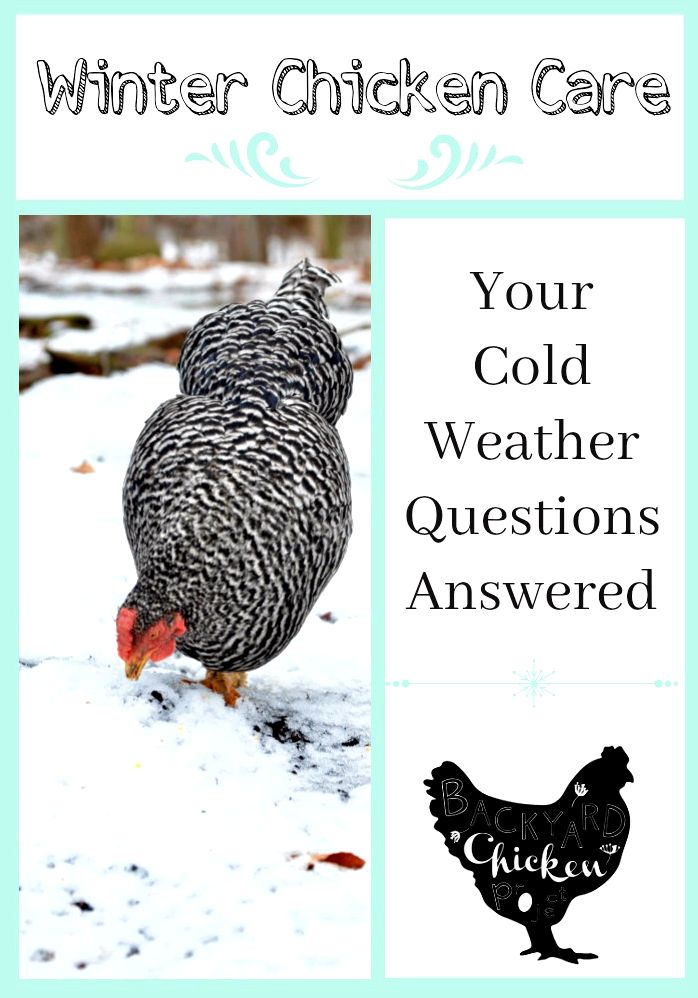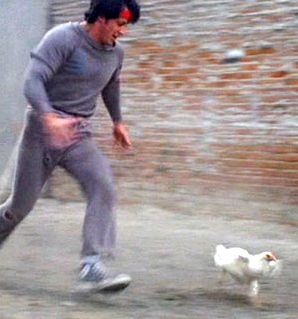Should i heat my chicken house?
If you are searching for that short answer, no. If you are searching for that lengthy answer, keep studying.
Navigation article:
- Should i heat my chicken house?
- However it will get below zero my home!
- Reasons not to utilize a heat lamp in the winter months:
- How chickens survive in the winter months:
- Why should i eliminate drafts?
- What’s the main difference between ventilation and drafts?
- How do you have ventilation within the coop without causing drafts?
- A thing on frostbite:
However it will get below zero my home!
Chickens can live quite easily in temperatures below zero, even with no supplemental flame.
It will help to understand that chickens won’t be the same as people. When you couldn’t survive inside a non heated building outdoors in subzero weather, your chickens can. Chickens very rarely show indications of distress in cold temperature and may survive all right as much as -10 levels F (and a few chickens can work if this drops less than that).
There are many wild creatures living outdoors all year long lengthy, even just in weather that’s 35 below, plus they achieve this without man-made shelters. Your chickens are lucky to possess a coop they are able to remain in if this will get freezing, and that’s literally all they have to stay warm.
In case you really consider it, sparrows and finches live outdoors within the bitter cold winter plus they survive all right, despite their small size. If sparrows can survive without heat, your chickens can too, simply because they have built-in characteristics which help them survive.

Reasons not to utilize a heat lamp in the winter months:
The main reason against utilizing a heat lamp: heat lamp cause many coop fires each year, killing entire flocks and often distributing to houses along with other outbuildings.
cause many coop fires each year, killing entire flocks and often distributing to houses along with other outbuildings.
It’s incredibly hard to correctly secure a heat lamp in order that it won’t fall lower. Consider the truth that chickens fly, and rather erratically at this. Flying chickens knocking into heat lamps every single day can lead them to release and fall. Whether or not the heat lamp is correctly guaranteed, debris for example down can float up in it and obtain caught within the lamp, causing it to trap fire.
One other good need to steer clear of the heat lampis the chance of it all of a sudden heading out without you realizing. When the heat lamp all of a sudden dies because of breakage or perhaps a power outage, your whole flock could perish. Chickens need time for you to acclimate to temperature changes. If they’re accustomed to the coop being warm during the cold months and also the temperature all of a sudden drops, their physiques get into shock and hypothermia rapidly takes hold. This could happen within hrs, and you’ll not notice until it’s far too late.
Nobody thinks it has happened to for them, until it will. Every year we learn about heat lamps beginning fires in coops, causing dying to entire flocks and harm to coops. Don’t permit this to take place. Heat lamps should not, ever, be utilized inside a chicken house
If, after studying this short article you’ll still feel you need to heat your coop during the cold months, please make use of a lcd heater rather of the heat lamp. A flat panel heater installed with a professional could be a much safer choice for the chicken house.

How chickens survive in the winter months:
Well… if chickens do not need a heater to become comfortable in the winter months, then exactly how will they stay warm once the temperature drops?
Chickens fluff up their down, creating an aura pocket between your down and skin. This supports the heated air radiating in the chicken’s body and keeps them comfortable even around the very coldest nights. Chickens also cluster together around the roost and cuddle to help keep one another warm. Resting on the roost keeps the chickens from the cold floor from the coop.
Though it might not seem like it, individuals wild birds are perfectly warm without your intervention.
Still don’t think that chickens are warm without supplemental heat? Next time you’ve got a chilly night, head out in to the chicken house. Put your hands underneath the wing of the chicken, or between their down, next to the skin. I believe you will see that the chickens do all right within the chill.
Why should i eliminate drafts?
Drafts may cause your toasty warm chickens to get frigid cold very rapidly. If air is blowing around the chickens it disrupts the pocket of heated air they’ve produced by fluffing their down, making them catch a chill. While you need to eliminate drafts within the coop, you shouldn’t seal them back completely, while you still ventilation for healthy wild birds.
Eliminate drafts by closing the chicken entrance towards the coop during the night as well as on cold days. Insulate the home windows within the coop exactly the same way you’d home windows within your house, caulk to avoid air leakage, and set some kind of barrier on the home windows. This is often plastic, card board, or wood. Seal up any large cracks around doorways as well as on walls.
What’s the main difference between ventilation and drafts?
While you need to close up drafts and wind inside your coop, you’ll still would like it to have proper ventilation. A draft is regarded as wind or breeze blowing in your chickens. A small, light draft is sufficient to disrupt the down and result in a chill. Departing a wide open door or window within the coop is much like departing an admirer blowing in your wild birds through the night, it’s ideal for the summer time but bad during the cold months.
Ventilation, however, is air flow through the coop. While you need to prevent drafts within the coop, you’ll still need air to flow interior and exterior the coop for that wild birds to stay healthy.
How do you have ventilation within the coop without causing drafts?
You would like your coop to become well insulated and closed enough to help keep out drafts, but air still must escape and go into the coop. Proper ventilation is important to maintaining flock health during the cold months.
Dust, ammonia, co2, and moisture need so that you can leave the coop and outdoors needs so that you can enter. The easiest method to get ventilation inside your coop would be to cut some small home windows in which the wall meets the ceiling. These home windows only have to be 1-2 ” tall and however wide you would like. They may be cut between studs. Make sure to secure hardware cloth within the home windows once you cut them. Predators can squeeze through small spaces and chicken wire
within the home windows once you cut them. Predators can squeeze through small spaces and chicken wire or screening won’t have them out.
or screening won’t have them out.
The overhang in the roof outdoors the home windows may prevent strong winds from blowing in to the coop, however the open home windows allows polluted air to leave and outdoors to go into. By doing this your coop is going to be well ventilated although not drafty.
A thing on frostbite:
Frostbite is because cold coupled with moisture. When the coop is simply cold, frostbite won’t form. Moisture accumulates within the coop in the chickens breathing, their waste, and water getting spilled from founts. Moisture is inevitable, if your coop is airtight, the moisture can’t escape, and combined with cold, creates the right atmosphere for frostbite.
Chickens with large combs are more inclined to get frostbite than the others. If you reside in a chilly climate it will help tremendously to boost cold tolerant wild birds.
Should you choose have some large combed chickens during the cold months, you are able to prevent frostbite through the elimination of drafts but allowing good ventilation inside your coop.
If you would like more details about raising chickens in the winter months, there exists a handy publish with 6 tips and methods that will help you keep the chickens warm in the winter months.
Backyard Chickens: How to Keep Your Chickens in Winter
Video COMMENTS:
Milsymo Love Loves!: My chickens are fine and I don’t do any of that
Isaac owusu Kusi: +Milsymo Vloger exactly
Whitney B: Sorry but if you feed your chicken the proper diet there is no need for extra light. Where I live it gets dark in the dead of winter by 6, and my girls are laying an egg almost every day. Just like the heat lamp adding light is unnecessary and I think probably annoying to the chickens. Keep them healthy and happy and they should keep in laying without light.
Graks list: all of your tips are for no use in Michigan
korntastesgood: Haha I was contemplating getting some chickens out here just west of Kalamazoo with the stable/coop that came with the house we bought and this comment gave me a good laugh.
Engineering Entropy: 0 degrees Fahrenheit is below freezing for water..
Isaac owusu Kusi: please dont use heat lamps in this winter i have seenn7 coops that have burned and 2 even destroyed their owners house
namemeepic: Adding a little bit of Milk to water prevents the water from freezing to tempratures as low as minus 5 degrees celcius.
TheOpelkoenjas: +namemeepic Didn’t know that! But is it okay to give milk, even deluded, to your chickens? Western Europe here, coast side, so -5°C doesn’t happen very often here. It DOES happen, rarely lately, but with the seasons going crazy we even haven’t seen any small snow carpet that lasted longer than a few hours. ^^
Keep That Style: Great advice, thanks! Meet our chickens here
Tags: winter
